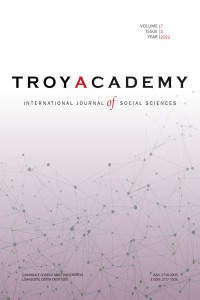Öz
Beslenme ve fiziksel hareket alışkanlıklarında meydana gelen değişimler, birçok ülkede artan obezite vakalarının nedeni olarak gösterilmektedir. Günümüzde günlük beslenme alışkanlıkları içerisinde sıklıkla yer bulan şekerli içecekler, içerdikleri yüksek şeker miktarı dolayısıyla tüketicilerde fazla kalori alımına neden olmaktadır. Kilo alımı ve dolayısıyla obezite ile ilişkilendirilen şekerli içeceklerin tüketimini azaltmak adına hükümetler, mali ve mali olmayan araçları çeşitli şekillerde kullanmaktadır. Obezite önleme politikaları içerisinde hükümetlerin tercih ettiği mali araçlardan bir tanesi şekerli içecek vergileridir. Şekerli içeceklerin vergilendirilmesi yolunu seçen hükümetler, vergi geliri sağlarken aynı zamanda ülkelerdeki obezite sıklığını ve obezitenin neden olduğu ekonomik yükü azaltmayı hedeflemektedir. Günümüzde şekerli içecek vergileri dünya genelinde 45 ülkede aktif şekilde kullanılmaktadır. Bu çalışmada şekerli içecek vergileri uygulayan 17 ülke örneği obezite sıklığında meydana gelen değişimler ile analiz edilmektedir. Analiz sonuçları, şekerli içecek vergilerinin şekerli içecek tüketimini azaltsa dahi obezite eğilimini azaltmada yetersiz kaldığını göstermektedir.
Anahtar Kelimeler
Kaynakça
- Akcan, Ö. M. (2019). “Çocuk ve Ergenlerde Şekerli İçecek Tüketimini Azaltmak İçin Kamu Politikaları”. J Pediatr Inf. 13(2), 116-117. https://doi.org/10.5578/ced.201930
- American Heart Association. (2021). Added Sugar. (25.04.2022) https://www.heart.org/en/healthy-living/healthy-eating/eat-smart/sugar/added-sugars#:~:text=What%20is%20the%20Added%20Sugar,day%2C%20or%20about%209%20teaspoons
- Backholer, K.; Vandevijvere, S.; Blake, M.; Tseng, M. (2018). “Sugar-Sweetened Beverage Taxes in 2018: A Yar of Reflections and Consolidation”. Public Health Nutrition. 21(18), 3291-3295.
- Bodirsky, B. L.; Dietrich, J. P., Martinelli, E.; Stenstad, A.; Pradhan, P.; Gabrysch, S.; Mishra, A.; Weindl, I.; Mouël, C. L.; Rolinski, S.; Baumstark, L.; Wang, X.; Waid, J. L.; Lotze‑Campen, H.; Popp, A. (2020). “The Ongoing Nutrition Transition Thwarts Long‑term Targets for Food Security, Public Health and Environmental Protection”. Scientifc Reports. (10), 1-14. https://doi.org/10.1038/s41598-020-75213-3
- DSÖ (2015). Assessment of the Impact of a Public Health Product Tax. (30.05.2022) https://www.euro.who.int/__data/assets/pdf_file/0008/332882/assessment-impact-PH-tax-report.pdf
- DSÖ (2016). Obesity and Overweight. (25.04.2022) https://www.who.int/news-room/fact-sheets/detail/obesity-and-overweight#:~:text=For%20adults%2C%20WHO%20defines%20overweight,than%20or%20equal%20to%2030
- DSÖ (2017). Taxes on Sugary Drinks: Why Do It?. (12.05.2022) http://apps.who.int/iris/bitstream/handle/10665/260253/WHO-NMH-PND-16.5Rev.1-eng.pdf
- DSÖ (2020). Obesity and Overweight. (22.04.2022) https://www.who.int/news-room/fact-sheets/detail/obesity-and-overweight.
- DSÖ (2021). Obesity. (25.04.2022) https://www.who.int/news-room/facts-in-pictures/detail/6-facts-on-obesity#:~:text=In%202016%2C%20more%20than%201.9,of%20being%20overweight%20or%20obese.
- DSÖ (2022). Prevalence of Overweight Among Adults, BMI >= 30. (23.05.2022) https://www.who.int/data/gho/data/indicators/indicator-details/GHO/prevalence-of-overweight-among-adults-bmi-=-25-(age-standardized-estimate)-(-)
- DSÖ (2022). Success Through Lessons Learned And Challenges Faced. (19.05.2022) https://apps.who.int/iris/bitstream/handle/10665/351781/WHO-EURO-2022-4781-44544-63081-eng.pdf?sequence=1&isAllowed=y
- Eknoyan, G. (2006). “A History of Obesity, or How What Was Good Became Ugly and Then Bad”. Advances in Chronic Kidney Disease. 13(4), 421-427.
- European Union (2022). Obesity Prevention. (30.05.2022) https://knowledge4policy.ec.europa.eu/health-promotion-knowledge-gateway/obesity_en#:~:text=Policy%20recommendations%20on%20prevention%20of%20obesity,-Many%20EU%20Member&text=The%20EU%20Action%20Plan%20on,easy%20options%20(%20EC%202014%20)
- Eurostat (2019). Overweight Population (BMI=>25). Overweight and Obesity - BMI statistics. (23.05.2022) https://ec.europa.eu/eurostat/statistics-explained/index.php?title=Overweight_and_obesity_-_BMI_statistics
- Eurostat (2021). How Often Do You Drink Sugar-Sweetened Soft Drinks? (25.04.2022) https://ec.europa.eu/eurostat/web/products-eurostat-news/-/ddn-20210727-1
- Eurostat (2022). Frequency of Drinking Sugar-Sweetened Soft Drinks by Sex, Age and Educational Attainment Level. (30.05.2022) https://ec.europa.eu/eurostat/databrowser/view/hlth_ehis_fv7e/default/table?lang=en.
- Forberger, S.; Reisch, L.; Meshkovska, B.; Lobczowska, K.; Scheller, D. A.; Wendt, J.; Christianson, L.; Frense, J.; Steinacker, J. M.; Luszczynska, A.; Zeeb, H. (2022). “Sugar Sweetened Beverage Tax Implementation Processes: Results of a Scoping Review”. Health Research Policy and Systems. 20(33), 1-11.
- Güneş, İ. ve Gedik, M. A. (2020). “Piyasa Başarısızlığı Örneği Olarak Obezite ve Kamusal Çözümler”. Ç.Ü. Sosyal Bilimler Enstitüsü Dergisi. 29(3), 492-506.
- Hattersley, L.; Thiebaud, A.; Silver, L.; Mandeville K. (2020). Countering Common Arguments Against Taxes on Sugary Drinks. Health, Nutrition and Population Knowledge Brief: 9, 1-4. Retrieved April 27, 2022, https://openknowledge.worldbank.org/handle/10986/34361
- Heinonnen, M. (2018). The Finnish Excise Tax On Sugar Sweetened Beverages And Its Effect On Their Prices And Demand . (Published Master's Thesis). Jyväskylä University. School of Business and Economics: Finlandiya.
- Libuda, L.; Alexy, U., Buyken, A. E.; Sichert-Hellert, W.; Stehle, P.; Kersting, M. (2009). “Consumption of Sugar-Sweetened Beverages and Its Association with Nutrient Intakes and Diet Quality in German Children and Adolescents”. British Journal of Nutrition. 101, 1549-1557. https://doi.org/10.1017/S0007114508094671
- Lusting, R. H.; Schmidt, L. A.; Brindis, C. D. (2012). “The Toxic Truth about Sugar”. Nature. 482, 27-29.
- Malik, V. S. ve Hu, F. B. (2019). “Sugar-Sweetened Beverages and Cardiometabolic Health: An Update of the Evidence”. Nutrients. 11 (8), 1-17. https://doi.org/10.3390/nu11081840
- McLennan, A. K. ve Ulijaszek, S. (2014). “Obesity Emergence in the Pacific Islands: Why Understanding Colonial History and Social Change is Important”. Public Health Nutrition. 18(8), 1499–1505. https://doi.org/10.1017/S136898001400175X
- NCD Alliance (2016). The Implementation of Taxation on Sugar-Sweetened Beverages by the Government of Barbados. (27.04.2022) https://ncdalliance.org/sites/default/files/resource_files/HCC-SSB-Brief-2016-2_0.pdf
- OECD (2022). Details of Tax Revenue – Denmark. (30.05.2022) https://stats.oecd.org/Index.aspx?DataSetCode=REVHUN#
- OECD (2017) Obesity Update 2017. (23.05.2022) https://www.oecd.org/health/health-systems/Obesity-Update-2017.pdf
- OECD (2019) Heavy Burden of Obesity: The Economics of Prevention. (25.04.2022) https://www.oecd.org/health/the-heavy-burden-of-obesity-67450d67-en.htm
- Øvrebø, B.; Halkjelsvik, T. B.; Meisfjord, J. R.; Bere, E.; Hart, R. K. (2020). “The Effects of an Abrupt Increase in Taxes on Candy and Soda in Norway: An Observational Study of Retail Sales”. International Journal of Behavioral Nutrition and Physical Activity. 17(115), 1-9.
- Özel Tüketim Vergisi Kanunu (2002 S. K. 4760). (7.06.2022) https://www.mevzuat.gov.tr/mevzuatmetin/1.5.4760.pdf
- Pan American Health Organization (2020). Sugar-Sweetened Beverage Taxation in the Region of the Americas. (27.04.2022) https://iris.paho.org/bitstream/handle/10665.2/53252/9789275123003_eng.pdf?sequence=1&isAllowed=y
- Paolicelli, C. W. (2016). “Factors Contributing to Overweight and Obesity”, Weight Management and Obesity (Ed: Paolicelli C.), Momentum Press, New York.
- Popkin, B. M. ve Ng, S. W. (2021). “Sugar-Sweetened Beverage Taxes: Lessons to Date and the Future of taxation”. Plos Medicine. 18(1), 1-6.
- Public Health England (2015). Sugar Reduction: the Evidence for Action. (29.04.2022) https://assets.publishing.service.gov.uk/government/uploads/system/uploads/attachment_data/file/470173/Annexe_2._Fiscal_evidence_review.pdf
- Rosinger, A.; Herrick, K.; Gahche, J.; Park, S. (2017) “Sugar-Sweetened Beverage Consumption among US Adults, 2011–2014”. NCHS Data Brief. (270), 1-8.
- Stafford, N. (2012). Denmark Cancels “Fat Tax” and Shelves “Sugar Tax” Because of Threat of Job Losses. (01.06.2022) https://www.bmj.com/content/345/bmj.e7889#:~:text=News-,Denmark%20cancels%20%E2%80%9Cfat%20tax%E2%80%9D%20and%20shelves%20%E2%80%9Csugar%20tax%E2%80%9D,of%20threat%20of%20job%20losses&text=Denmark's%20so%20called%20fat%20tax,one%20year%20after%20being%20introduced.
- Tax Policy Center (2020). The State of State (and Local) Tax Policy. Tax Policy Center Brıefıng Book, 1-35. (23.05.2022) https://www.taxpolicycenter.org/sites/default/files/briefing-book/specific_state_and_local_taxes_1.pdf
- Thomas, C. S. (2013). “Denmark to Scrap Decades-Old Soft Drinks Tax. (25.04.2022) https://www.foodnavigator.com/Article/2013/04/25/Denmark-to-scrap-decades-old-soft-drink-tax
- Zhou, B.; Ichikawa, R.; Parnell, L. D.; Noel, S. E.; Zhang, X.; Bhupathiraju, S. N.; Smith, C. E.; Turcker, K. L.; Ordovas, J. M.; Lai, C. Q. (2020). “Metabolomic Links between Sugar-Sweetened Beverage Intake and Obesity”. Hindawi Journal of Obesity. 1-10. https://doi.org/10.1155/2020/7154738
Ayrıntılar
| Birincil Dil | Türkçe |
|---|---|
| Bölüm | Araştırma Makaleleri |
| Yazarlar | |
| Yayımlanma Tarihi | 30 Ekim 2022 |
| Yayımlandığı Sayı | Yıl 2022 Cilt: 7 Sayı: 3 |


